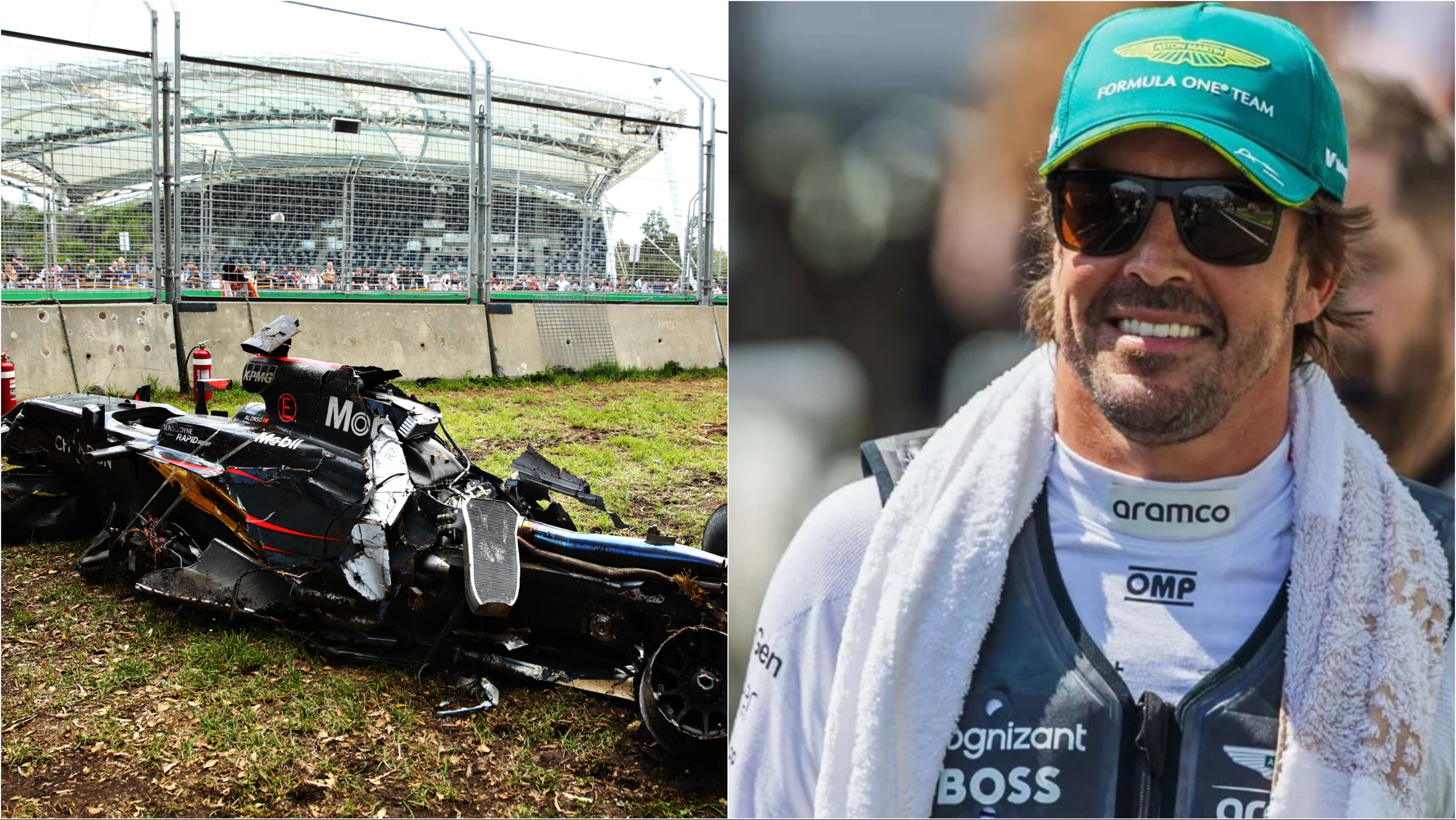the high-octane world of Formula 1, where drivers routinely push the limits of speed and endurance, few incidents have highlighted the sport’s inherent dangers and advancements in safety as dramatically as Fernando Alonso’s harrowing crash during the 2016 Australian Grand Prix. The two-time world champion’s miraculous escape from a devastating accident not only underscored the perils drivers face but also showcased the remarkable progress in F1 safety protocols.
On March 20, 2016, at Melbourne’s Albert Park Circuit, the race was unfolding with typical intensity. On the 17th lap, Alonso, driving for McLaren, was in close pursuit of Esteban Gutiérrez’s Haas car as they approached Turn 3 at speeds nearing 200 mph. In a split second, Alonso’s front right wheel made contact with Gutiérrez’s left rear wheel, a collision that would lead to one of the most dramatic crashes in recent F1 history.
The impact sent Alonso’s car hurtling into the barriers, where it was launched into a series of violent rolls, disintegrating upon impact. The McLaren was reduced to a mangled wreck, with debris scattered across the gravel trap. Spectators and team members watched in horror, fearing the worst.
Amazingly, amidst the wreckage, Alonso emerged, crawling out of the remnants of his car and walking away under his own power. Reflecting on the incident, Alonso remarked, “I am lucky to be here and thankful to be here. It was a scary moment and a scary crash.”
He further elaborated on his experience during the crash: “You are just flying and then you see the sky, the ground, the sky, the ground, and you don’t know. Everything felt as though it was happening slower than it seemed from the outside. You want it to stop and it doesn’t stop; it keeps going and going and going. It was quite scary.”

The race was immediately red-flagged to allow for the extensive debris to be cleared, leading to a 20-minute suspension. Both Alonso and Gutiérrez were taken to the medical center for evaluation and were subsequently declared uninjured. The stewards investigated the incident but deemed it a racing incident, attributing no fault to either driver.
Alonso’s survival without significant injury was widely regarded as a testament to the advancements in Formula 1 safety measures. The integrity of the carbon-fiber monocoque chassis, the effectiveness of the HANS (Head and Neck Support) device, and the rigorous crash testing protocols all played crucial roles in protecting the driver.
Reflecting on the incident, Alonso stated, “The reason I’m still alive is probably thanks to all the fantastic work the FIA has done over the past 10 or 15 years to improve safety, work they continue to do. And I’m also grateful to everyone at McLaren, who built me such a strong and safe car.”
Fernando Alonso’s escape from the 2016 Australian Grand Prix crash remains one of the most remarkable survival stories in motorsport history. It serves as a sobering reminder of the dangers inherent in Formula 1 and underscores the continuous need for advancements in safety. Alonso’s return to racing shortly after the incident exemplifies the resilience and determination characteristic of F1 drivers, further cementing his legacy as one of the sport’s most formidable competitors.
Leave a Reply